Gezeigt werden Events mit Startzeiten zwischen: 08:00 – 20:00
Suchen
Bevorstehende Events
Lade Events
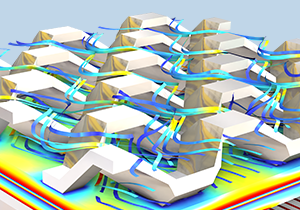
Jan. 6
| 08:00 CET
Solving Large Models in COMSOL Multiphysics®
COMSOL
Webinar
Online

Jan. 6–9
| 12:00 PST
CES
COMSOL
Exhibition
Las Vegas
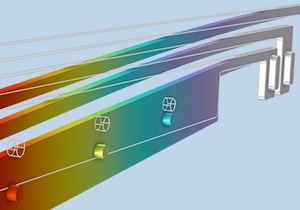
Jan. 13–16
| 11:00 EST
Introduction to COMSOL Multiphysics®
COMSOL
Trainingskurs
Online
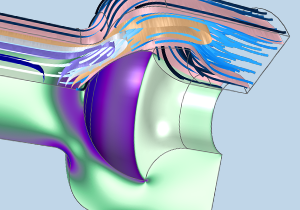
Jan. 13
| 14:00 EST
Polymer Flow Modeling
COMSOL
Webinar
Online

Jan. 15
| 11:00 EST
COMSOL Day: Version 6.4
COMSOL
COMSOL Day
Online
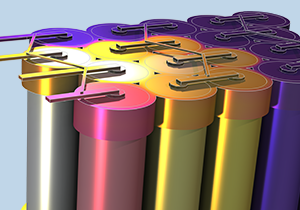
Jan. 20
| 08:00 CET
The Basics of COMSOL® in 18 Minutes
COMSOL
Webinar
Online

Jan. 20–23
| 11:00 EST
Battery Modeling in COMSOL Multiphysics®
COMSOL
Trainingskurs
Online
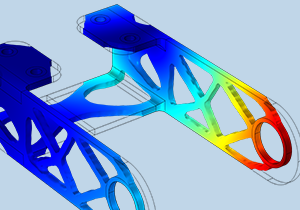
Jan. 22
| 14:00 EST
Shape and Topology Optimization with COMSOL Multiphysics®
COMSOL
Webinar
Online
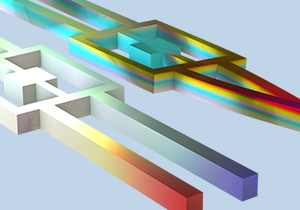
Jan. 27–30
| 11:00 EST
Structural Mechanics Modeling in COMSOL Multiphysics®
COMSOL
Trainingskurs
Online

Jan. 27
| 11:30 EST
The Basics of COMSOL Multiphysics® in 18 Minutes
COMSOL
Webinar
Online
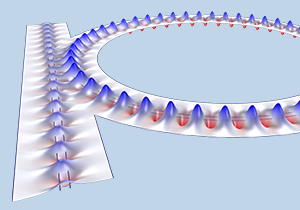
Jan. 29
| 14:00 EST
Simulating Optical Waveguides
Laser Focus World
Webinar
Online

Feb. 3
| 08:00 CET
Topology Optimization with COMSOL® in 18 Minutes
COMSOL
Webinar
Online
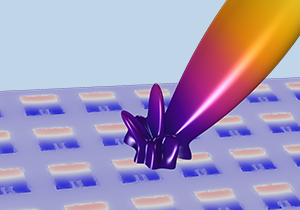
Feb. 10–13
| 11:00 EST
RF Modeling in COMSOL Multiphysics®
COMSOL
Trainingskurs
Online
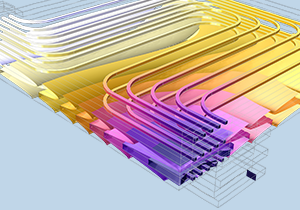
Feb. 12
| 08:00 CET
Wie Simulation die Batterietechnologie der Zukunft formt
Process
Webinar
Online
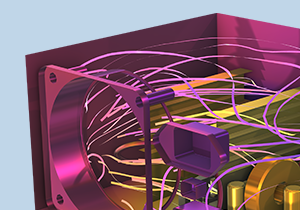
Feb. 17
| 08:00 CET
Heat Transfer Modeling with COMSOL® in 18 Minutes
COMSOL
Webinar
Online
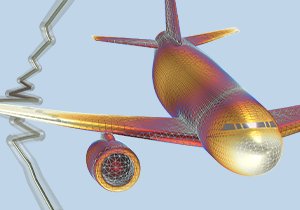
März 3
| 08:00 CET
Modeling for Aerospace Engineering with COMSOL Multiphysics®
COMSOL
Webinar
Online

März 3–6
| 11:00 EST
Introduction to COMSOL Multiphysics®
COMSOL
Trainingskurs
Online

März 3
| 14:00 EST
Editing, Repairing, and Combining Imported STL Files with CAD
COMSOL
Webinar
Online

März 10–13
| 11:00 EDT
CFD Modeling in COMSOL Multiphysics®
COMSOL
Trainingskurs
Online
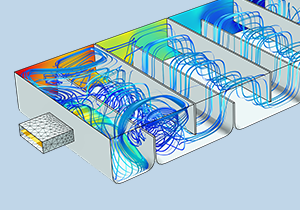
März 17
| 09:00 CET
CFD Modeling with COMSOL Multiphysics® in 18 Minutes
COMSOL
Webinar
Online
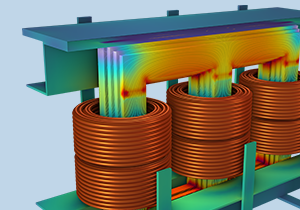
März 24–27
| 11:00 EDT
AC/DC Modeling in COMSOL Multiphysics®
COMSOL
Trainingskurs
Online

Apr. 14–17
| 11:00 EDT
Introduction to COMSOL Multiphysics®
COMSOL
Trainingskurs
Online
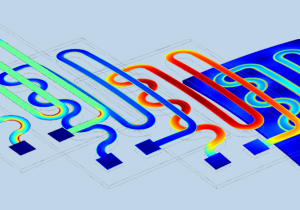
Apr. 21–24
| 11:00 EDT
Heat Transfer Modeling in COMSOL Multiphysics®
COMSOL
Trainingskurs
Online
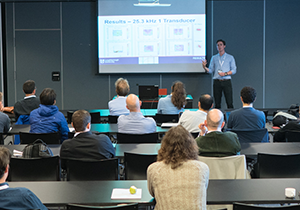
Apr. 28–29
| 09:00 EDT
Introduction to COMSOL Multiphysics®
COMSOL
Trainingskurs
Burlington
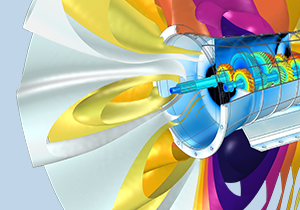
Mai 5–8
| 11:00 EDT
Acoustics Modeling in COMSOL Multiphysics®
COMSOL
Trainingskurs
Online

Mai 19–22
| 11:00 EDT
Introduction to COMSOL Multiphysics®
COMSOL
Trainingskurs
Online

Juni 23–26
| 11:00 EDT
Introduction to COMSOL Multiphysics®
COMSOL
Trainingskurs
Online
8 von 27 Events werden angezeigt
27 von 27 Events werden angezeigt
| Date | Time | Title | Type | Host | Discipline |
|---|---|---|---|---|---|
| Jan. 6 | 08:00 |
Solving Large Models in COMSOL Multiphysics® |
Webinar | COMSOL-Online |
|
| Jan. 6–9 | 12:00 |
CES |
Spezielle Events | COMSOL-Las Vegas |
|
| Jan. 13–16 | 11:00 |
Introduction to COMSOL Multiphysics® |
Trainingskurs | COMSOL-Online |
|
| Jan. 13 | 14:00 |
Polymer Flow Modeling |
Webinar | COMSOL-Online |
|
| Jan. 15 | 11:00 |
COMSOL Day: Version 6.4 |
COMSOL Day | COMSOL-Online |
|
| Jan. 20 | 08:00 |
The Basics of COMSOL® in 18 Minutes |
Webinar | COMSOL-Online |
|
| Jan. 20–23 | 11:00 |
Battery Modeling in COMSOL Multiphysics® |
Trainingskurs | COMSOL-Online |
|
| Jan. 22 | 14:00 |
Shape and Topology Optimization with COMSOL Multiphysics® |
Webinar | COMSOL-Online |
|
| Jan. 27–30 | 11:00 |
Structural Mechanics Modeling in COMSOL Multiphysics® |
Trainingskurs | COMSOL-Online |
|
| Jan. 27 | 11:30 |
The Basics of COMSOL Multiphysics® in 18 Minutes |
Webinar | COMSOL-Online |
|
| Jan. 29 | 14:00 |
Simulating Optical Waveguides |
Webinar | Laser Focus World - Online |
|
| Feb. 3 | 08:00 |
Topology Optimization with COMSOL® in 18 Minutes |
Webinar | COMSOL-Online |
|
| Feb. 10–13 | 11:00 |
RF Modeling in COMSOL Multiphysics® |
Trainingskurs | COMSOL-Online |
|
| Feb. 12 | 08:00 |
Wie Simulation die Batterietechnologie der Zukunft formt |
Webinar | Process - Online |
|
| Feb. 17 | 08:00 |
Heat Transfer Modeling with COMSOL® in 18 Minutes |
Webinar | COMSOL-Online |
|
| März 3 | 08:00 |
Modeling for Aerospace Engineering with COMSOL Multiphysics® |
Webinar | COMSOL-Online |
|
| März 3–6 | 11:00 |
Introduction to COMSOL Multiphysics® |
Trainingskurs | COMSOL-Online |
|
| März 3 | 14:00 |
Editing, Repairing, and Combining Imported STL Files with CAD |
Webinar | COMSOL-Online |
|
| März 10–13 | 11:00 |
CFD Modeling in COMSOL Multiphysics® |
Trainingskurs | COMSOL-Online |
|
| März 17 | 09:00 |
CFD Modeling with COMSOL Multiphysics® in 18 Minutes |
Webinar | COMSOL-Online |
|
| März 24–27 | 11:00 |
AC/DC Modeling in COMSOL Multiphysics® |
Trainingskurs | COMSOL-Online |
|
| Apr. 14–17 | 11:00 |
Introduction to COMSOL Multiphysics® |
Trainingskurs | COMSOL-Online |
|
| Apr. 21–24 | 11:00 |
Heat Transfer Modeling in COMSOL Multiphysics® |
Trainingskurs | COMSOL-Online |
|
| Apr. 28–29 | 09:00 |
Introduction to COMSOL Multiphysics® |
Trainingskurs | COMSOL-Burlington |
|
| Mai 5–8 | 11:00 |
Acoustics Modeling in COMSOL Multiphysics® |
Trainingskurs | COMSOL-Online |
|
| Mai 19–22 | 11:00 |
Introduction to COMSOL Multiphysics® |
Trainingskurs | COMSOL-Online |
|
| Juni 23–26 | 11:00 |
Introduction to COMSOL Multiphysics® |
Trainingskurs | COMSOL-Online |
|
Trainings durch Certified Consultants
Aufgezeichnete Webinare
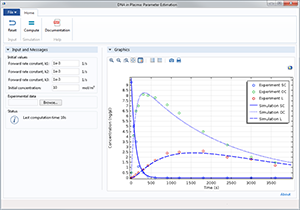
Parameter Estimation for Nonlinear Materials
Webinar
Dec 11

Introducing COMSOL Multiphysics® Version 6.4
Webinar
Dec 10

Multiphysics Simulation of Power Transformers
Webinar
Dec 09
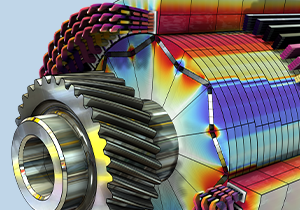
Multiphysics Simulation for Vehicle Electrification
Webinar
Dec 02

Optimising Manufacturing Processes Through Simulation
Webinar
Nov 26

Designing Efficient Electric Motors with COMSOL Multiphysics
Webinar
Nov 26

Efficient Battery Modeling with Surrogate Models
Webinar
Nov 19

Automating Your Modeling Workflow in COMSOL Multiphysics®
Webinar
Nov 18

The Basics of COMSOL Multiphysics® in 18 Minutes
Webinar
Nov 11

Modeling Pipe Flow & Heat in COMSOL Multiphysics®
Webinar
Nov 06

Modeling Gyroscopes and Accelerometers in COMSOL Multiphysics®
Webinar
Oct 30

Modeling and Simulation for Electric Motor Design
Webinar
Oct 15
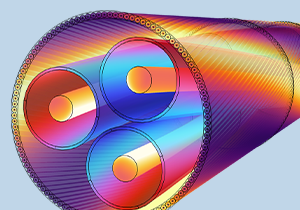
Simulating Electrical Power Systems for the Grid
Webinar
Oct 14

Unravelling Chemomechanical Effects in Lithium-Ion Batteries
Webinar
Oct 09
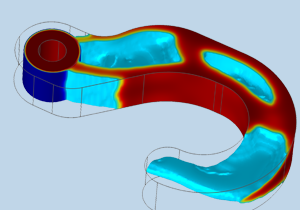
Optimierung keramischer 3D-Drucke durch Simulation
Webinar
Oct 09

Modeling Next-Generation Battery Technologies with COMSOL Multiphysics®
Webinar
Oct 06

Modeling Emerging Battery Technologies with COMSOL Multiphysics®
Webinar
Sep 25

Modeling and Simulation of MEMS Devices
Webinar
Sep 23

Elektrische Entladungen modellieren
Webinar
Sep 18
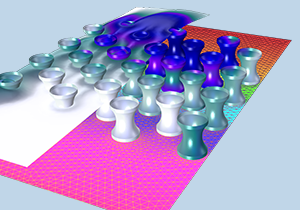
Modeling Reaction Kinetics and Pharmacokinetics with COMSOL Multiphysics®
Webinar
Sep 11
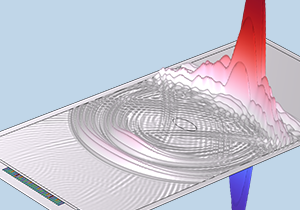
Modeling Ultrasound for Biomedical Applications
Webinar
Sep 09

Optimization of Thermal Management Systems
Webinar
Sep 03

Prediction of Electromagnetic Signatures of Naval Vessels with COMSOL Multiphysics
Webinar
Aug 28

Modeling Room Acoustics in COMSOL Multiphysics®
Webinar
Aug 19

Modeling and Simulation for Electric Motor Design
Webinar
Aug 14

Moisture Transport Modeling in COMSOL Multiphysics®
Webinar
Aug 07

Modeling Hydrogen Fuel Cells and Electrolyzers
Webinar
Aug 06

The Basics of COMSOL Multiphysics® in 18 Minutes
Webinar
Aug 05
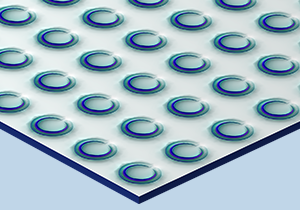
Modeling Acoustic Metamaterials in COMSOL Multiphysics
Webinar
Jul 31

Multiphysics Modeling of Power Electronics
Webinar
Jul 29

Fatigue and Durability Analysis Using COMSOL Multiphysics®
Webinar
Jul 24

Biomedical Modeling with COMSOL Multiphysics
Webinar
Jul 17
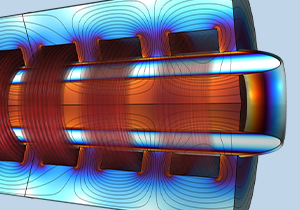
Understanding Liquid Metal Transport in Magnetic Fields — Simulating Magnetohydrodynamic Duct Flow
Webinar
Jul 11

Modeling Electric Motors and Drivetrains
Webinar
Jul 10

Memristor Modeling with COMSOL Multiphysics®
Webinar
Jul 02
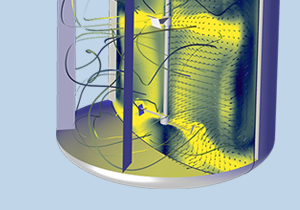
Modeling Fluid Mixers and Stirred Tank Reactors in COMSOL Multiphysics®
Webinar
Jun 26
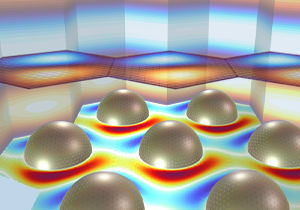
Modellierung optischer Nanostrukturen mit COMSOL Multiphysics®
Webinar
Jun 17
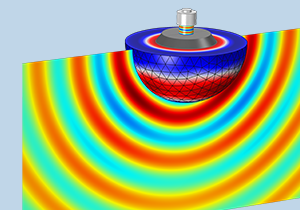
Underwater Acoustics
Webinar
Jun 12
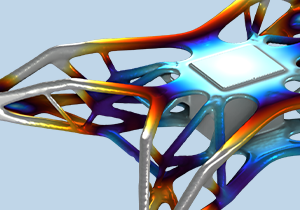
Optimization in Structural Mechanics
Webinar
Jun 12

Hydrogen Technology Innovation with Simulation
Webinar
Jun 12

Modeling Hydrogen Fuel Cells and Electrolyzers
Webinar
Jun 12
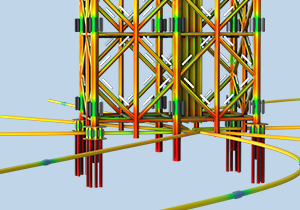
Modeling Chemical Reactions and Reacting Flows Using COMSOL Multiphysics®
Webinar
Jun 05

Introduction to Multibody Dynamics Modeling with COMSOL Multiphysics
Webinar
May 28
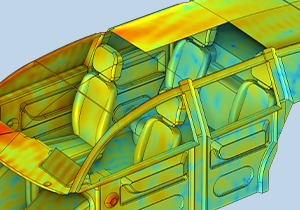
Automotive Acoustics Analysis Using COMSOL Multiphysics®
Webinar
May 27

Acoustics in Electronics Series, Part 4: Piezoelectric Devices
Webinar
May 20

Improving Thermal Management of Batteries with COMSOL Multiphysics®
Webinar
May 09
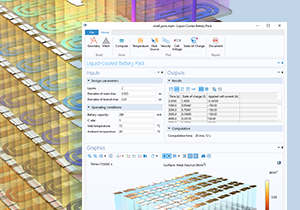
Demokratisierung der Multiphysik-Simulation
Webinar
May 08

Acoustics in Electronics Series, Part 3: Hearing Aids
Webinar
May 06

Acoustics in Electronics Webinar Series, Part 2: MEMS Speakers and Microphones
Webinar
Apr 16

The Basics of COMSOL Multiphysics® in 18 Minutes
Webinar
Apr 15

Optimization in RF and Wave Optics
Webinar
Apr 09

Wave & Ray Optics Modeling with COMSOL®
Webinar
Apr 09

Meshing Your Models in COMSOL Multiphysics®
Webinar
Apr 08

Multiphysics Simulation in Semiconductor Packaging
Webinar
Apr 03
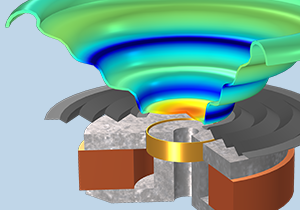
Acoustics in Electronics Webinar Series, Part 1: Loudspeakers
Webinar
Mar 25
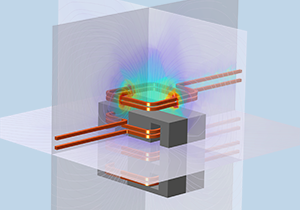
Simulating Electrical Power Systems for the Grid
Webinar
Mar 20
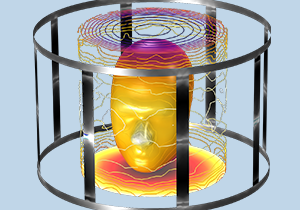
Modellierung biomedizinischer Geräte mit COMSOL Multiphysics®
Webinar
Mar 20
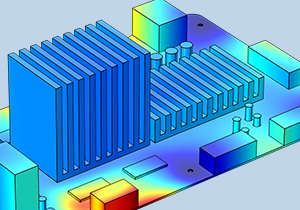
Multiphysics Modeling of Electronic Components
Webinar
Mar 20

Using Geometry Modeling Tools in COMSOL Multiphysics®
Webinar
Mar 18

Improving Thermal Management of Batteries with COMSOL Multiphysics®
Webinar
Mar 18

Modeling Chemical Reactions and Reacting Flows Using COMSOL Multiphysics®
Webinar
Mar 06

Integrating Frequency-Dependent Data into Time-Domain Acoustics Analysis
Webinar
Feb 27
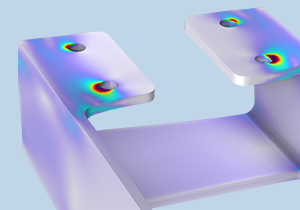
Introduction to Uncertainty Quantification
Webinar
Feb 26

Entwicklung von Leistungselektronik und Kabelsystemen
Webinar
Feb 25

Efficient Battery Modeling with Surrogate Models
Webinar
Feb 18

The Basics of COMSOL Multiphysics® in 18 Minutes
Webinar
Feb 13
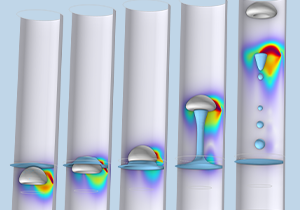
Designing a Magnetorheological-Fluid-Based Clutch Using COMSOL Multiphysics®
Webinar
Feb 13

Modeling Biochemical Sensors and Testing Devices with COMSOL®
Webinar
Jan 29

Modeling Optical Nanostructures with COMSOL Multiphysics®
Webinar
Jan 23

Electric Discharge Modeling
Webinar
Jan 21

Automotive Acoustics Analysis Using COMSOL Multiphysics®
Webinar
Jan 16

The Basics of COMSOL Multiphysics® in 18 Minutes
Webinar
Jan 14

Modeling Hydrogen Production, Storage and Utilization
Webinar
Aug 21
6 von 73 Events werden angezeigt
73 von 73 Events werden angezeigt
- Produktinformationen
- Produkte
- Spezifikationstabelle
- Lizenzoptionen
- Systemanforderungen
- Release-Historie
- Support und Service
- Support Center
- Meine Supportfälle
- Knowledge Base
- Partner und Consultants
- Dokumentation
- Produkt Download
- Unternehmen
- Über COMSOL
- Karriere
- Presse
- Kontakt
- |
- Datenschutzerklärung
- |
- Warenzeichen
- |
- Cookie Settings
- © 2025 by COMSOL. Alle Rechte vorbehalten
